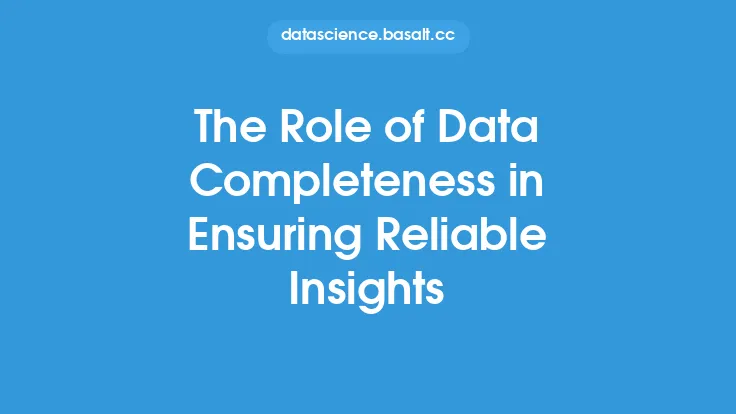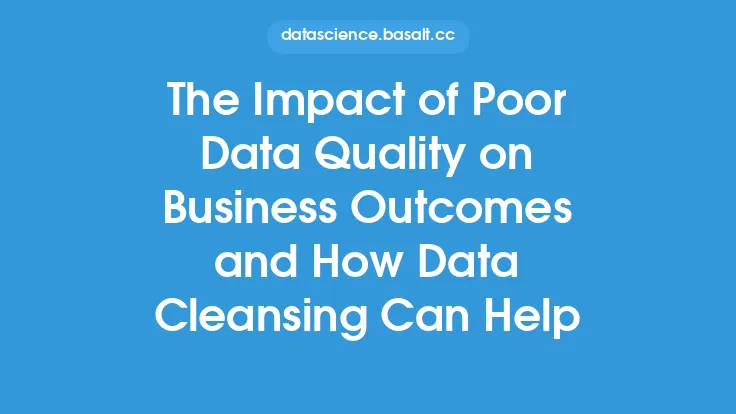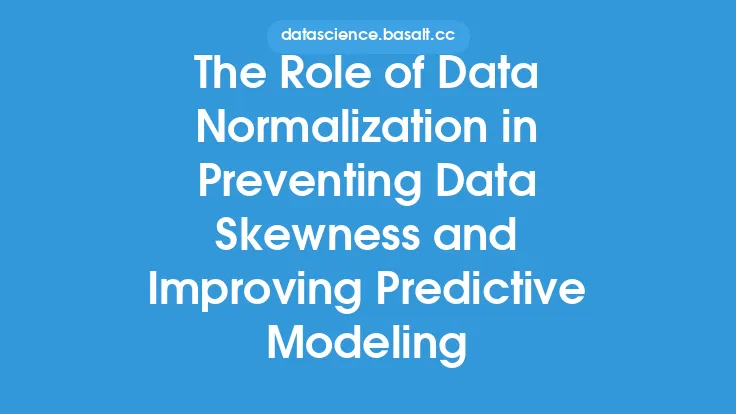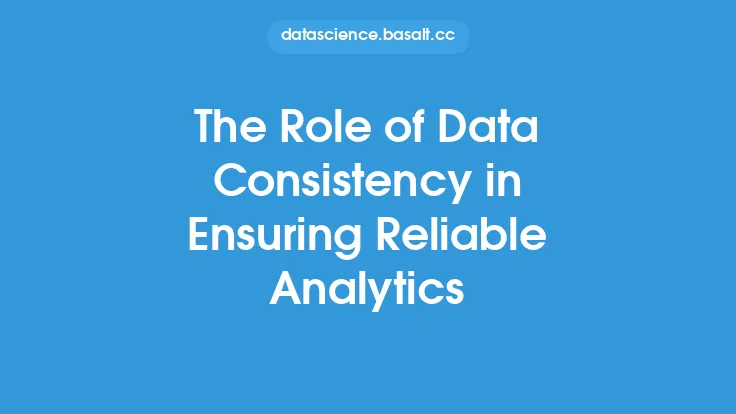Data analysis and modeling are crucial components of any data-driven organization, as they enable informed decision-making and drive business outcomes. However, the accuracy and reliability of these processes are heavily dependent on the quality of the data being used. Poor data quality can lead to incorrect insights, flawed models, and ultimately, poor decision-making. This is where data cleansing plays a vital role in ensuring that data is accurate, complete, and consistent, thereby enabling reliable data analysis and modeling.
Introduction to Data Cleansing
Data cleansing, also known as data cleaning or data scrubbing, is the process of identifying, correcting, and transforming inaccurate, incomplete, or inconsistent data into a more accurate, complete, and consistent form. This process involves a series of steps, including data profiling, data validation, data normalization, and data transformation. The primary goal of data cleansing is to improve the quality of the data, making it more reliable and suitable for analysis and modeling.
The Importance of Data Cleansing in Data Analysis
Data analysis is the process of extracting insights and patterns from data, and it is a critical component of any data-driven organization. However, data analysis is only as good as the data being used. Poor data quality can lead to incorrect insights, flawed models, and ultimately, poor decision-making. Data cleansing plays a crucial role in ensuring that data is accurate, complete, and consistent, thereby enabling reliable data analysis. By removing errors, inconsistencies, and inaccuracies from the data, data cleansing helps to improve the accuracy and reliability of data analysis.
Data Cleansing Techniques for Reliable Data Modeling
Data modeling is the process of creating a conceptual representation of the data, and it is a critical component of any data-driven organization. However, data modeling is only as good as the data being used. Poor data quality can lead to flawed models, and ultimately, poor decision-making. Data cleansing plays a crucial role in ensuring that data is accurate, complete, and consistent, thereby enabling reliable data modeling. Some common data cleansing techniques used for reliable data modeling include data normalization, data transformation, and data aggregation. Data normalization involves transforming the data into a standard format, while data transformation involves converting the data from one format to another. Data aggregation involves combining multiple data sources into a single, unified view.
The Impact of Poor Data Quality on Data Analysis and Modeling
Poor data quality can have a significant impact on data analysis and modeling, leading to incorrect insights, flawed models, and ultimately, poor decision-making. Some common problems associated with poor data quality include missing or duplicate data, inaccurate or inconsistent data, and incomplete or outdated data. These problems can lead to a range of issues, including biased models, incorrect insights, and poor decision-making. By removing errors, inconsistencies, and inaccuracies from the data, data cleansing helps to improve the accuracy and reliability of data analysis and modeling.
Data Cleansing Tools and Technologies
There are a range of data cleansing tools and technologies available, including data profiling tools, data validation tools, and data transformation tools. Data profiling tools help to identify errors, inconsistencies, and inaccuracies in the data, while data validation tools help to ensure that the data is accurate and complete. Data transformation tools help to convert the data from one format to another, making it more suitable for analysis and modeling. Some common data cleansing tools and technologies include Excel, SQL, and data cleansing software such as Trifacta and Talend.
Best Practices for Data Cleansing
There are a range of best practices for data cleansing, including data profiling, data validation, and data transformation. Data profiling involves identifying errors, inconsistencies, and inaccuracies in the data, while data validation involves ensuring that the data is accurate and complete. Data transformation involves converting the data from one format to another, making it more suitable for analysis and modeling. Other best practices for data cleansing include data normalization, data aggregation, and data documentation. By following these best practices, organizations can ensure that their data is accurate, complete, and consistent, thereby enabling reliable data analysis and modeling.
Conclusion
In conclusion, data cleansing plays a vital role in ensuring reliable data analysis and modeling. By removing errors, inconsistencies, and inaccuracies from the data, data cleansing helps to improve the accuracy and reliability of data analysis and modeling. There are a range of data cleansing techniques, tools, and technologies available, including data normalization, data transformation, and data aggregation. By following best practices for data cleansing, organizations can ensure that their data is accurate, complete, and consistent, thereby enabling reliable data analysis and modeling. As data continues to play an increasingly important role in business decision-making, the importance of data cleansing will only continue to grow.





